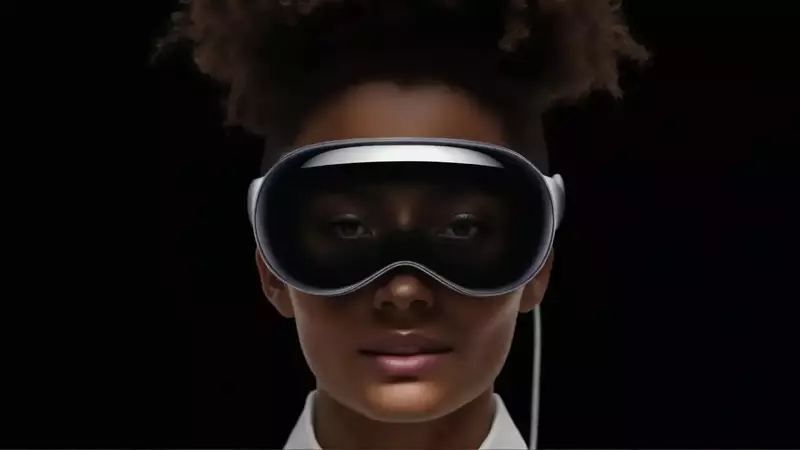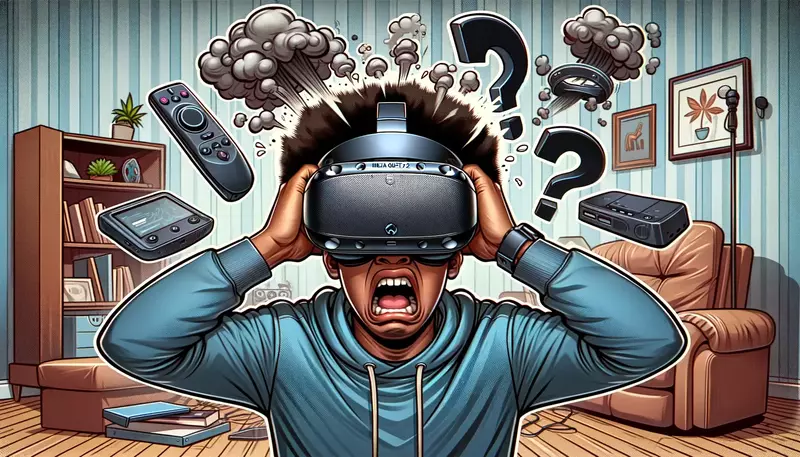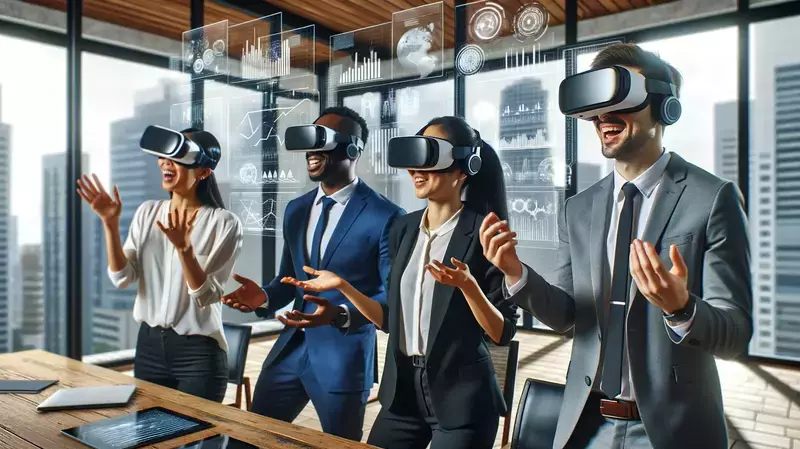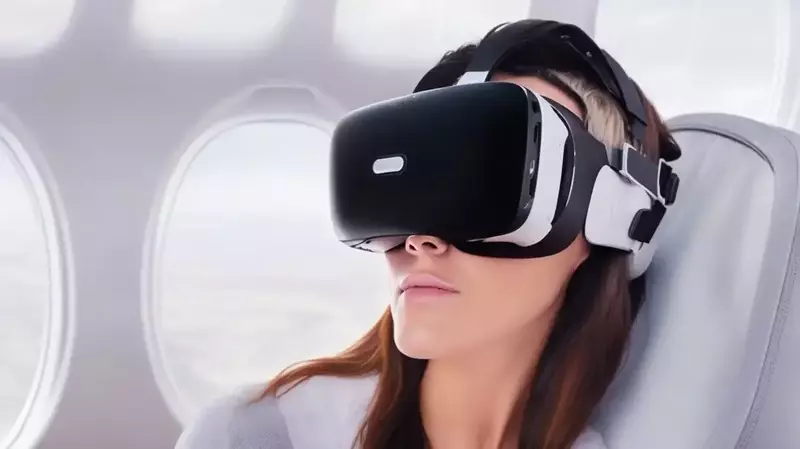Apple’s highly anticipated augmented reality (AR) glasses, Vision Pro, have finally been unveiled at their headquarters in Cupertino. The launch event generated both excitement and skepticism, with the audience’s reactions reflecting a mix of awe and disbelief.
In this blog post, we delve into the details of Vision Pro, exploring its design, features, and potential impact on the VR/AR market. While Apple has undoubtedly introduced several groundbreaking elements, the exorbitant price tag raises questions about accessibility and market viability.

Key Takeaways:
- Apple’s Vision Pro introduces innovative features and technologies that set it apart from competitors in the VR/AR market.
- The positive reception and excitement surrounding Vision Pro indicate the potential for Apple to make VR/AR technology more appealing.
- The exorbitant price of Vision Pro raises concerns about accessibility and mass adoption, challenging its market viability.
Classic Apple design
The first impressions of Vision Pro reveal a design reminiscent of Apple’s iconic products. The glasses showcase a sleek aesthetic, with rounded corners and a mesh fabric similar to the AirPods Max.
Notably, the digital crown from the Apple Watch makes an appearance, along with a black plastic panel on the front. The battery box, capable of providing two hours of usage, can be charged via USB-C.
Inspired by many products
Drawing inspiration from various Apple devices, Vision Pro features a head strap reminiscent of the Apple Watch strap. It incorporates an embedded “MagSafe” connection for power.
Users have the option to connect the glasses to a portable battery for a two-hour runtime or to a wall outlet for extended use.
Although Apple hasn’t confirmed the availability of additional batteries, it is speculated that they may be offered separately.
Positive reactions
The audience at the launch event responded positively to several aspects of Vision Pro. The seamless integration of VR and the surrounding environment, particularly demonstrated when seamlessly transitioning from a Mac workflow to the glasses, elicited enthusiastic responses.
Apple’s implementation of unique features and technologies sets Vision Pro apart from competitors such as HTC and Meta, creating a sense of anticipation for the product’s potential.
The price factor
However, the excitement surrounding Vision Pro was tempered by the staggering price announcement. At $3500, the glasses surpassed initial rumors, leaving many in disbelief.
The steep price raises concerns about the accessibility of Vision Pro and whether it will be within reach for the average consumer.
What did Apple actually show?
One question that emerged following the launch event was the extent of the showcased features and content. While Apple demonstrated traditional apps appearing in the air over real-world images and video playback, no specific content tailored for the glasses was revealed.
The absence of a “killer app” leaves the potential of Vision Pro open to speculation, emphasizing the need for further clarification from Apple.
The “first, no matter the cost” approach
Regardless of the associated cost, Apple’s willingness to invest heavily in Vision Pro distinguishes the company from its competitors.
While other brands, such as HTC and Meta, cap their prices at around $1,000 to $1,500, Apple has chosen to venture into a higher price range.
Vision Pro incorporates exclusive technologies, including specially developed displays, user retina identification, and an ecosystem that seamlessly bridges the gap between large and small screens.
These factors contribute to the premium price tag.
The refrain: Still VR, but maybe?
Initial reviews from prominent media outlets offer praise for Vision Pro while highlighting the ongoing challenges faced by the VR/AR industry as a whole.
The Verge commends the glasses’ high-end build quality and impressive displays but notes the lack of clarity regarding their intended purpose.
Engadget echoes similar sentiments, considering Vision Pro a milestone in VR/AR technology but emphasizing the persistent challenges faced by the industry.
Influencer MKBHD acknowledges the exclusivity of Vision Pro, drawing parallels with the initial Apple Watch launch and suggesting that early adopters and developers will shape the direction of the product.
Did “VR” just become sexy? And is that enough?
Despite the promise and potential of VR/AR technology, its mainstream appeal has waned over the years. Apple’s entry into the market with Vision Pro raises the question of whether the company can revitalize and redefine the industry.
The allure of cutting-edge features and superior technology may not be sufficient to justify the steep price point.
While Apple has a track record of transforming previously unexciting technologies into desirable products, the ultimate reception and success of Vision Pro remain uncertain.
Final Thoughts
Apple’s Vision Pro represents a significant leap in the VR/AR field, incorporating innovative features, impeccable design, and a seamless ecosystem. The overwhelmingly positive reactions from the audience and initial reviews highlight the potential of the product.
However, the exorbitant price tag raises concerns about accessibility and mass adoption. Whether Vision Pro can reshape the perception of VR/AR and overcome the challenges faced by the industry remains to be seen.
Apple’s history of defying expectations positions them as a potential catalyst for change, but only time will tell if Vision Pro can deliver on its promises.
Frequently Asked Questions
Q: What is the price of Vision Pro?
A: Vision Pro comes with a hefty price tag of $3500, which may exceed 40,000 kroner in some countries. The high cost raises concerns about the accessibility of the product.
Q: What features make Vision Pro unique?
A: Vision Pro showcases a sleek design reminiscent of Apple’s iconic products, along with a digital crown and a black plastic panel. It incorporates specially developed displays, user retina identification, and an ecosystem that seamlessly integrates with various screens.
Q: What challenges does the VR/AR industry face?
A: The VR/AR industry continues to grapple with the lack of compelling content and a clear “killer app.” While the technology has lost some of its initial allure, Apple’s entry with Vision Pro holds the potential to revitalize the industry.

Espen
Espen is the Director of PursuitMeta and has written extensively about Virtual Reality and VR Headsets for years. He is a consumer product expert and has personally tested VR Headsets for the last decade.




Leave a Reply